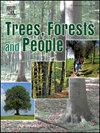Disentangling research on oak decline factors in Mediterranean-type climate regions: A systematic review
IF 2.7
Q1 FORESTRY
引用次数: 0
Abstract
The genus Quercus holds significant ecological and economic value in the Northern Hemisphere Mediterranean-type climate (MTC) regions. However, Quercus species and ecosystems are threatened by decline. Despite the importance of this genus, a comprehensive analysis of the causes of oak decline across these regions is still lacking. This study maps and analyzes research on oak decline in MTC regions, examining causal factors and Quercus species studied, while identifying knowledge gaps and future research priorities. We systematically reviewed 241 peer-reviewed articles on oak decline in MTC regions up to 2022, retrieved from the Web of Science and Scopus databases.
Our findings show that scientific articles on oak decline began to be published in 1981 and peaked in 2021. Most studies focused on the Mediterranean Basin, with disparities between Northern Africa and Southern Europe. The most frequently studied species were Quercus suber L. and Quercus ilex L. in the Mediterranean Basin, and Quercus agrifolia Née and Quercus kelloggii Newb. in California, comprising 53% of all species mentioned. Pathogens (48%) and climate factors (17%) were identified as the most researched causes of oak decline. Additionally, multiple interactions between factors were identified, confirming that these combinations potentially exacerbate oak decline. Climate factors were the most frequently found in combination with others. Conversely, pathogens were mostly studied in isolation, reflecting their widely recognized role in oak decline.
The study highlights the potential risk of pathogen and pest transference between MTC regions and the critical role of management practices in influencing oak decline in interaction with biotic and abiotic factors.
地中海型气候区栎树衰退因子的系统分析
栎属植物在北半球地中海型气候(MTC)地区具有重要的生态和经济价值。然而,栎属物种和生态系统正受到衰退的威胁。尽管这一属很重要,但对这些地区橡树衰落的原因的全面分析仍然缺乏。本研究绘制并分析了MTC地区栎树衰落的研究,考察了栎树衰落的原因和研究的栎树种类,同时确定了知识差距和未来的研究重点。我们系统地回顾了241篇同行评议的关于MTC地区到2022年橡树衰退的文章,这些文章检索自Web of Science和Scopus数据库。我们的研究结果表明,1981年开始发表关于橡树衰退的科学文章,并在2021年达到顶峰。大多数研究集中在地中海盆地,北非和南欧之间存在差异。研究频次最高的树种为地中海盆地的亚栎树和绿栎树,以及海榆和凯氏栎树。占上述物种总数的53%。病原菌(48%)和气候因素(17%)被认为是研究最多的橡树衰退原因。此外,还发现了多种因素之间的相互作用,证实了这些组合可能加剧橡木的衰退。气候因素最常与其他因素结合在一起。相反,病原菌大多是单独研究的,这反映了它们在橡树衰退中被广泛认可的作用。该研究强调了MTC地区之间病原菌和有害生物转移的潜在风险,以及管理措施与生物和非生物因素相互作用在影响橡树衰退中的关键作用。
本文章由计算机程序翻译,如有差异,请以英文原文为准。
求助全文
约1分钟内获得全文
求助全文
来源期刊

Trees, Forests and People
Economics, Econometrics and Finance-Economics, Econometrics and Finance (miscellaneous)
CiteScore
4.30
自引率
7.40%
发文量
172
审稿时长
56 days
 求助内容:
求助内容: 应助结果提醒方式:
应助结果提醒方式:


